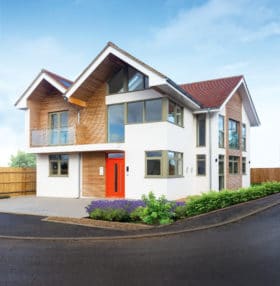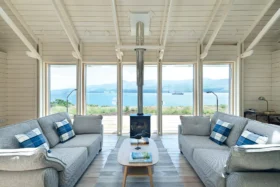
Learn from the experts TONIGHT with our online training course!
Use the code BUILD for 20% off
Learn from the experts TONIGHT with our online training course!
Use the code BUILD for 20% offAfter thirty years of living in a grade II listed building, Christopher Goodman decided that it was time for a new way of life. Having separated from his wife, he wanted to create a home for himself that was easy to look after, comfortable, cost effective and sociable.
His previous house had 11 rooms, and once the children had left, he found only three of the rooms were being used. He didn’t want to be constrained by a traditional layout. “I wanted to live in a house that suited me and my way of life; a flexible home that would be able to adapt to different situations whether I was alone or with friends,” he says.
Having lived near Oxford for 40 years, Christopher knew that he wanted to stay in the area so he scoured the villages within a five-mile radius for a suitable building plot. It took him a long time and at points his search seemed impossible, but eventually he spotted a plot online that already had outline planning permission.
The flat site was set well back from a small road that leads into the village. And although a quarter of an acre in size, the layout meant that it would be difficult to get more than one house onto the site, so that fortunately meant there was no competition from developers.
Christopher was delighted to secure the land for £205,000. With the capital from the sale of his previous house, he was now in a position to set about creating his perfect home without the need for a mortgage.
Over the years, Christopher has spent a large amount of time in Denmark as his ex mother-in-law is Danish. He loves the country and its architecture, so there were strong Scandinavian design influences at play when he decided to build his own home from scratch. He was very drawn to the clean and uncluttered lines of some contemporary European houses.
Having researched the options for self building, Christopher realised he had neither the time nor the know-how to manage the project himself. “The turnkey solution really appealed to me and I was impressed by Hanse Haus’ approach and expertise from the start,” he says.
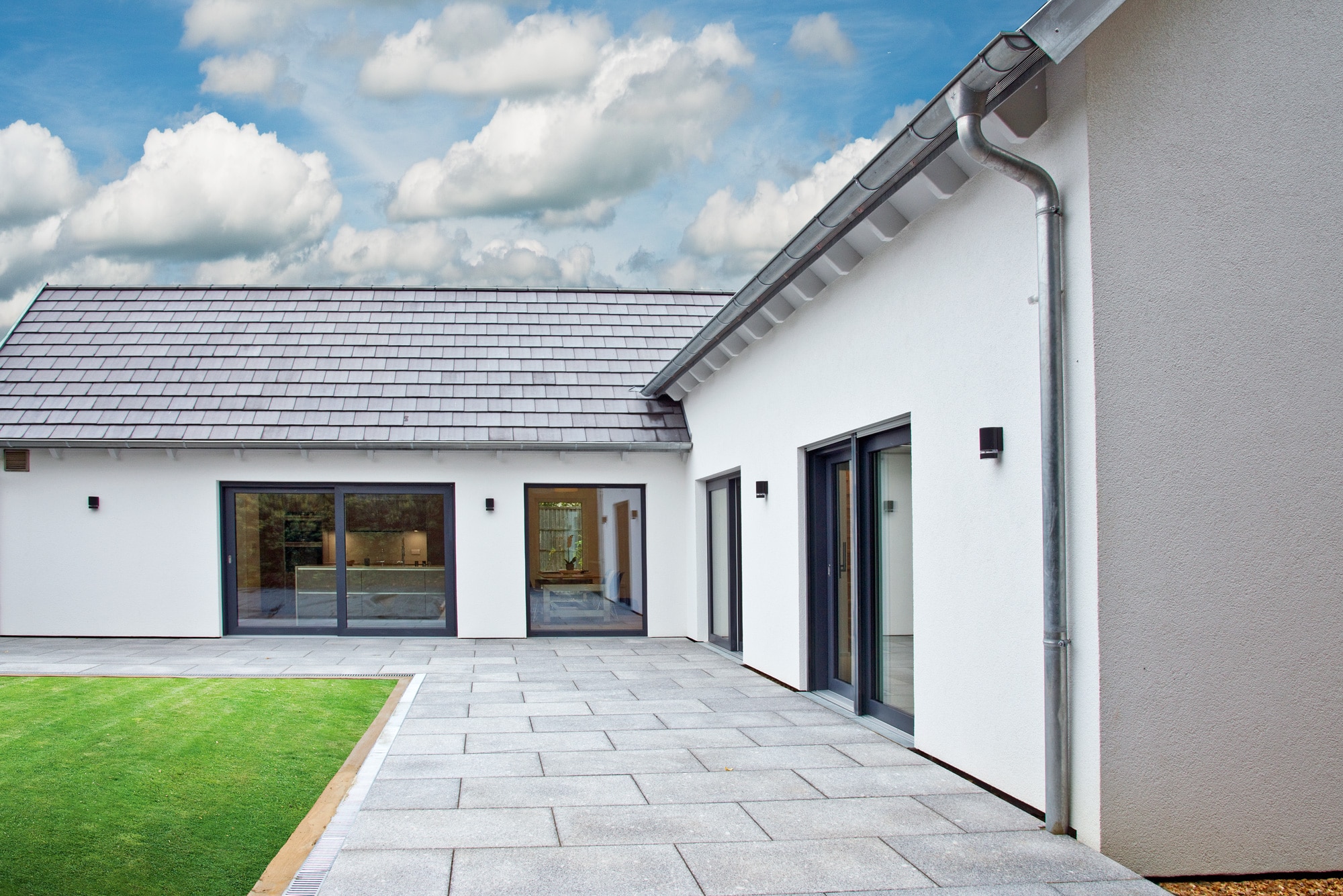
The new home features a grey and white external palette. Large glazed areas open the L-shaped building onto the garden
“They offer a great deal of flexibility when it comes to the design and specification of houses and I liked the fact that they could build me a property that would perform well and be cost effective to run.”
With a very clear idea of how he wanted his new home, even down to the number and layout of rooms and the positioning of windows, Christopher employed the skills of MJS Design – a recommended partner of Hanse Haus in the UK – to finalise the plans. The company coordinated with the package firm to make sure the details worked with their structural system.
What we learnedTALK TO YOUR NEIGHBOURS before you start. By discussing your plans and ideas with them early on, you can gauge their reaction and avoid local issues when it gets to planning. ASSUME GETTING PLANNING permission will take longer than you anticipate. The same goes for organising service connections. Work out how long you think these will take, then double it, and maybe even add a bit more time! USING A PACKAGE design and build company like Hanse Haus can take away a great deal of the challenges and stresses usually associated with self building. They can deliver your property at the quality and price you have agreed and there will be no hidden surprises. DON’T BE CONSTRAINED by traditional ideas because 21st century building technology makes many more things possible than in the past. Use your imagination, engage with your suppliers and make use of the experience of your workforce – there will probably be a way to turn your ideas into reality. |
The drawings were submitted for planning and, about 10 weeks later, the council responded with a request that the roof tiles should be flat grey concrete instead of red clay. Unfortunately, the lead-time on the new units meant the building schedule was delayed.
“Although I had to wait a bit longer, Hanse Haus were incredibly decent. Even despite the Brexit vote happening, they were very honourable with the exchange rate offered, which was close to the level at the start of our discussions,” adds Christopher.
In the summer of 2016, Christopher travelled to Germany to visit the Hanse Haus headquarters, including the show homes and factory. He made another trip for choosing materials a few months later. “The sampling visit was especially interesting,” he says.
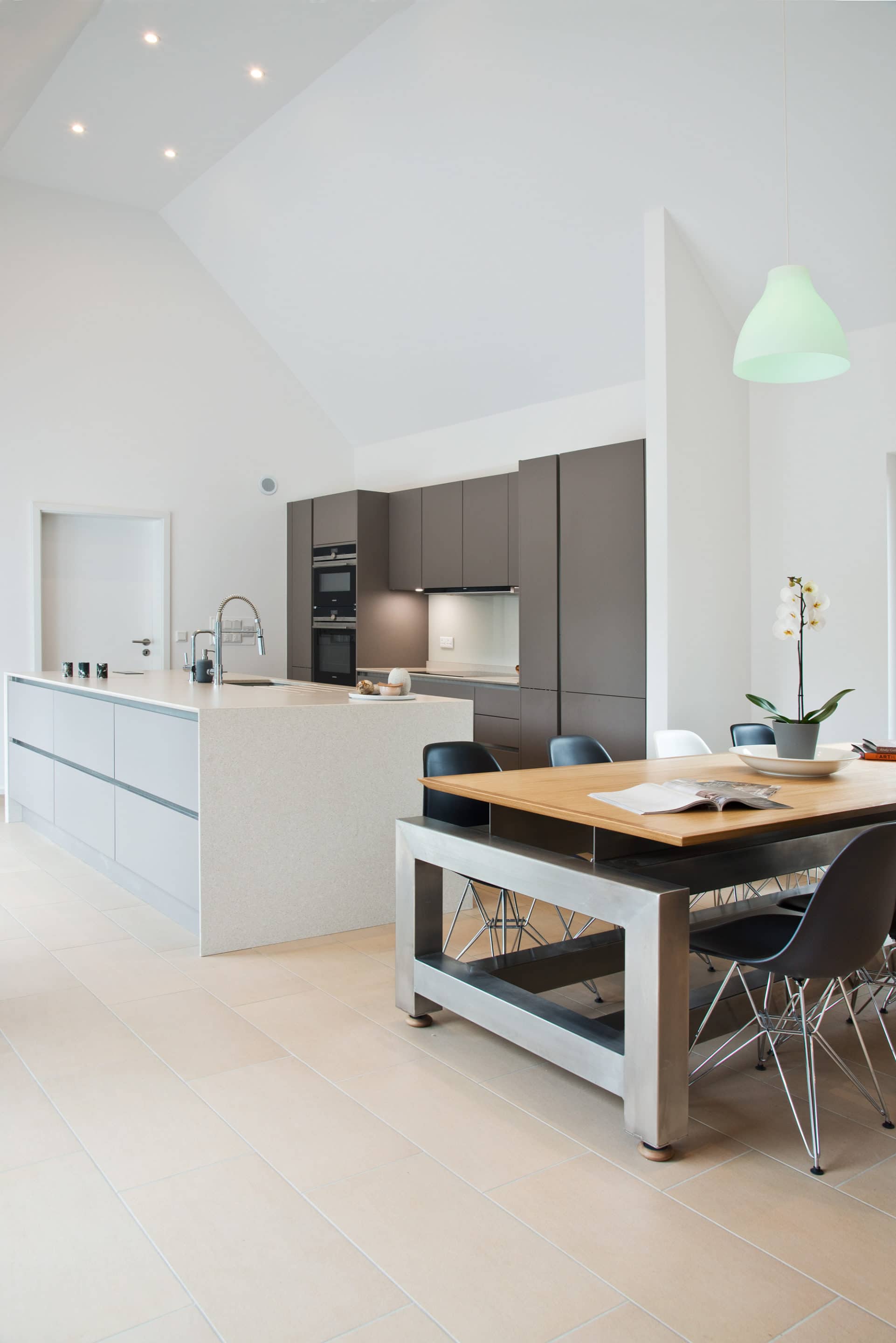
The downstairs features a large open-plan living-dining-kitchen space, which reaches the length of the property. With no storey above, vaulted ceilings allow a truly spacious feel
“There are a huge variety of products to choose from as standard. I did upgrade here and there, especially on sanitaryware.” It was important to Christopher that any guests to his new house would feel fully at home, so each of the three bedrooms has ensuite facilities. In the master bathroom there is a freestanding tub with some interesting focal lighting, adding a sense of fun.
Before work on the new house could start the plot had to be cleared. The site had been used as a builder’s storage yard and there was an existing structure, largely rotted away and resembling more of a hovel than a house, which had to be demolished. Christopher reused the bricks as hard core for the new drive.
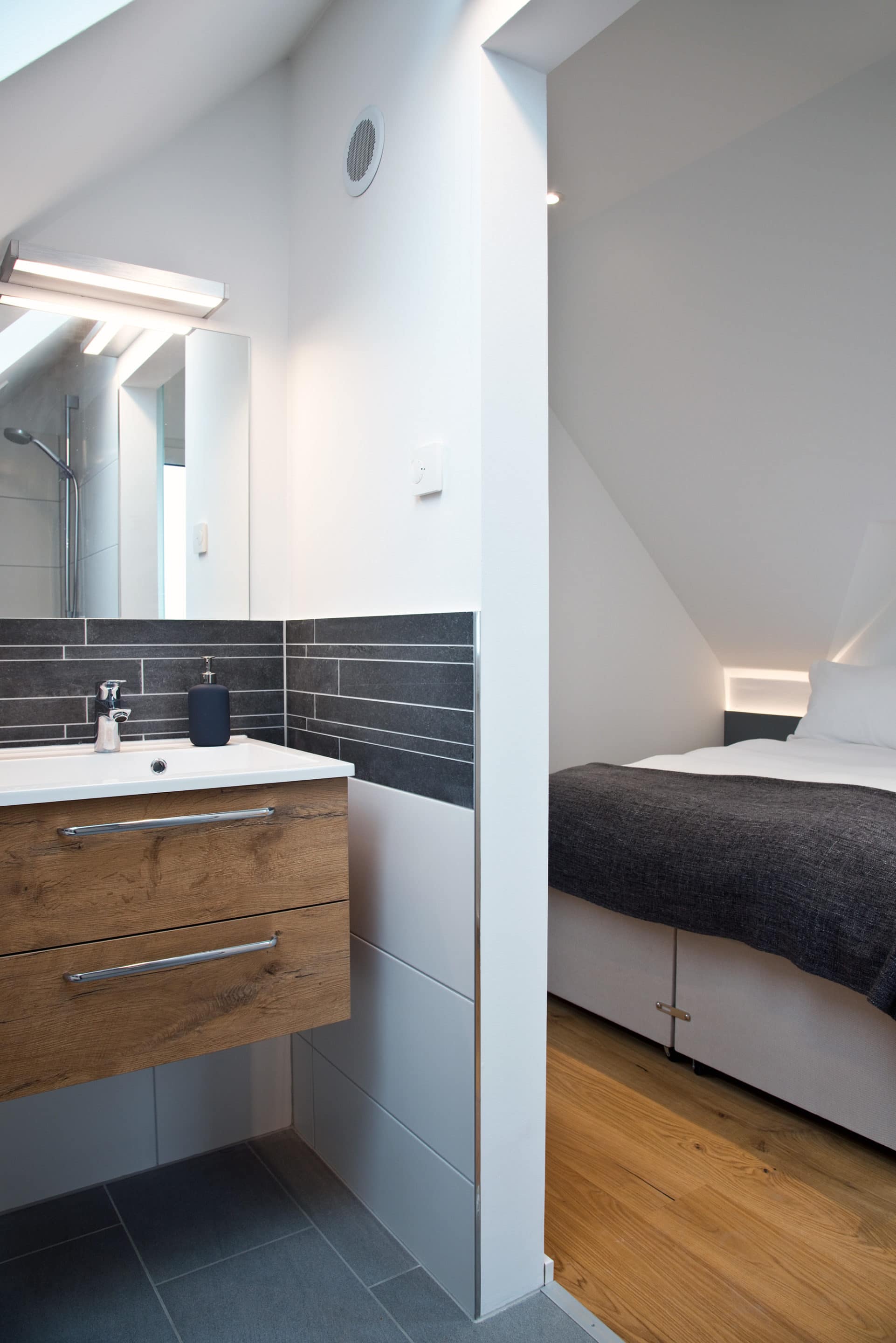
The master bedroom is downstairs; it features a sliding door through to the large ensuite bathroom
Groundworks started in April 2017 and were completed in July, although they were much more substantial than originally budgeted. As the site is mainly clay, 17 piles each 300mm in diameter were needed. The civil engineer insisted that each pile needed to be 10m in depth.
The result was that the foundations cost a whopping £105,000, when a price of £50,000 had been anticipated.
Next was the formation of the concrete slab, which had to be millimetre perfect for the factory built panels to fit. Almost as soon as this first stage was signed off, in early August, the construction of the house could begin. The first lorries arrived at 6.30am along with a 100ft crane; by the end of the first day the whole of the ground floor was complete. It took just a further three days before the first floor was done, the roof on, and house watertight.
“The Hanse Haus team were incredibly quick and efficient, with a specialist group for each segment of the build, ie structural, insulation and plumbing,” explains Christopher. “I had complete confidence in all the teams.”
The internal fit out went equally smoothly and Christopher moved into his new home in November 2017. The outside of the property was rendered to blend in with local houses as specified by planning regulations.
One of the reasons for choosing Hanse Haus was the quality of the finished product and the energy efficiency of the finished product. The exterior walls are 30cm thick and have a Sto bonding external insulation. The interior walls are 12cm thick and the house boasts the Hanse Haus solid wall system, which combines the advantages of timber, SIPs and solid wall construction.
As Hanse Haus architect Bianca Keil explains: “The walls have a stud every 300mm and are completely glued on both sides with OSB boards, which makes them load bearing and means that the fixing of wall units, including heavy kitchen cabinets, is possible throughout the building.”
The roof, walls and ceilings are insulated with a mineral wool product and the windows are triple-glazed. The house is heated with an air source heat pump and underfloor heating, supplemented by a heat recovery and ventilation system. The setup means there are no hot and cold zones common in old houses and none of the condensation issues, either. There is also cabling installed for solar panels should Christopher decide to install them in the future.
The main structure of the house has great sustainability credentials thanks to the timber-based, prefabricated building system – which delivers excellent insulation values alongside low embodied carbon. Added to this, the short construction time on-site meant that the build caused minimal disturbance to the surrounding environment.
Furthermore, only the roof rafters and the battens were impregnated with Boron salt to protect the wood against humidity, otherwise no wood preservative was used and all materials are chemical free.
“Communication is key,” says Christopher. “Starting with the architectural drawings, it is important that a detailed brief is taken about your lifestyle and the most effective layout of the rooms that will best meet your needs. This is not a large house but I use the space fully. It is vital that your design and build company takes the time to ask questions, and to really listen to the answers. Hanse
Haus were fantastic at this. Nothing was too much trouble and I felt like a valued customer throughout the entire process.”
There are almost always unexpected issues when building a new house, and for Christopher’s project there were delays in getting services to the site. “The telephone line took far longer than it should have. And Thames Water have one team for water in and another for waste water and inevitably the two don’t seem to communicate,” he says.
“The services are an extra cost that need to be considered. In effect you can end up paying twice if, for example, both the electricity board and the water board dig their channels under separate arrangements. So if you can coordinate the two to happen at the same time it would be sensible and should save money.”
Christopher is very happy with his new house. He loves the open-plan kitchen, dining and living space, which is great for entertaining. The hallway is fun architecturally, with interesting angles and a galleried walkway connecting the two upstairs bedrooms with strings of lights recessed into the banisters to match the ones on the stairs.
The whole house is very light and the vaulted ceiling in the kitchen area makes it feel very airy and spacious. Christopher is taking his time with the furnishings and the placement of artwork to make sure he gets it right. He designed the monumental kitchen table himself, at the moment it has a wooden top, but when finances allow he is planning to replace this with stone.
“The whole project has been very fulfilling. This house started out as an idea in my head, and thanks to Hanse Haus I’ve been able to turn it into a reality without having to compromise,” says Christopher. “It is just what I wanted for this new phase of my life.”
